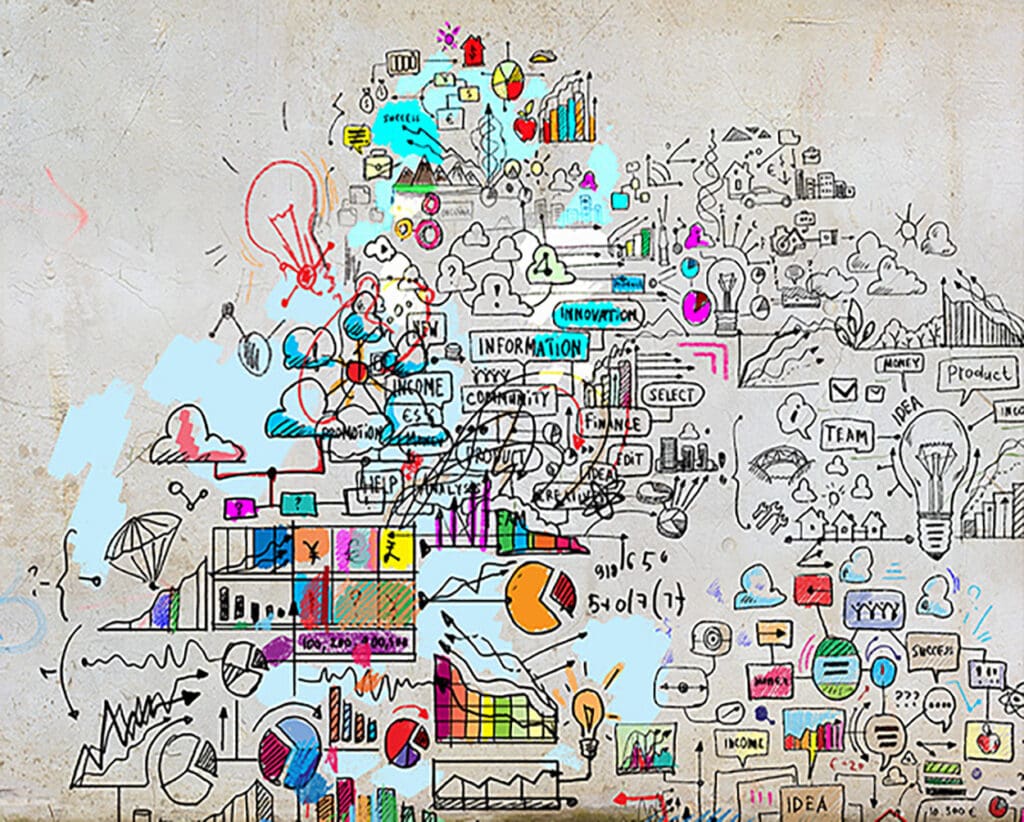How TV shows changed advertising and marketing… not the internet
A lot of people think it was the advent of the internet that changed how complex advertising has become. The truth is, the industry was becoming more multi-layered long before we all became ‘connected’ and our viewing habits were already changing… all the internet did was accelerate an already emerging behaviour brought about the humble TV show.
Don’t believe us? Then read on and we’ll show you how the humble TV cop show can be used to show that all the internet did was satiate a desire for multi-layered communications rather than create one. TV and internet advertising go hand in hand to communicate with customers.
The Starsky and Hutch formula
Back in the 1970s, one of the most popular TV shows in the world was the cop show Starsky and Hutch. It followed a pretty much tried and tested formula that would be reframed and used by other famous shows of the time (that came before and after it) like Kojak, Quincy, The Rockford Files (great theme song) and Charlie’s Angels (we know they weren’t cops, but you get the idea).
The formula for Starsky and Hutch went like this.
- Crime gets committed, usually a murder
- Starsky & Hutch rock up, look for clues but are baffled
- Starsky or Hutch gets involved with a woman who is likely connected to the case
- Starsky & Hutch visit Huggy Bear and get the ‘word on the street’
- ‘Word on the street’ leads them to a location where they crack the case and discover that either romantic interest is involved or has been killed
And pretty much that type of formula kept the masses entertained for years… until!
The Hill Street Blues effect
In 1981 a radical new cop show emerged that broke the formula. It did some radical things such as not wrapping up neatly in a bow the case in each episode. We followed the cops in their home lives and the lines between good and bad were beginning to blur. We had stories that would stretch over multiple episodes and this lit a fire that created a whole host of shows that followed suit… and required more of your attention to watch.
Not far behind Hill Street Blues was the show St. Elsewhere… which if you really want your mind blown, go and google the ‘Tommy Westphall Universe’. St. Elsewhere was one of a number of shows that were influenced by Hill Street Blues
The cop shows didn’t stop there… and it affected advertising
From here over the next 20 or so years you had the emergence of the multi-layered, multi-plotted cop show with story arcs that ran over multiple seasons such as NYPD Blue and culminating in the brilliance of The Wire. You also had the shows that begun spin-off shows such CSI and Law & Order.
The point we are making here is that over the course of 30 years, entertainment became more complex and engaging. Gone were the passive and linear storylines in the 1970s. Now people were coming home from a hard day’s work and sitting down and no longer switching off… they were switching on to complex stories and soon the advertisers began to take note that they needed to make their advertising more engaging too.
The Gold Blend Couple
One of the first advertisers to catch on to this was the coffee brand Gold Blend. The Gold Blend Couple campaign ran for around 6 years and ultimately used a story-arc to keep people emotionally invested on the adverts and therefore the product.
They weren’t the only advertisers to quickly recognise they needed to make their advertising more cerebral and engaging. In 1986 British Gas created a great deal of intrigue with their ‘Where’s Sid’ campaign that had the nation wondering who in fact was ‘Sid’ and used a true multi-channel approach to the advertising.
This more engaging and cerebral approach to advertising then began to spawn a new advertising medium called ‘Ambient Advertising’. This was because clients began to demand something a bit different from their agencies, as they recognised that audiences were becoming increasingly disengaged from their adverts and they needed to find a way to re-engage.
In 1996 the term ‘ambient advertising’ was first used, but in truth the practice was around way before this, it just hadn’t been given a name that everyone could latch onto yet. Ultimately the practice relied on using clever and engaging ideas and placement together to surprise and delight people and disrupt them… the same way they were being disrupted in their TV watching.
And people loved it! Not only did it cost less in terms of media spend, but it spawned chatter at coffee machines and water coolers (that were predominantly occupied by work and TV show conversations) about the inventive marketing messages they had been exposed to.
Then along came the internet
By the time the internet came along you already had both TV shows and movies engaging people across multiple platforms and seasons and sequels. Shows such as Heroes and the movie The Matrix, and its sequels, began to run storylines and sub plots and side plots across comics, books, computer games and create websites where you could delve deeper into the universe of these worlds.
But it certainly wasn’t the internet that created this desire. For years shows had used other platforms such as annuals, records and novels and TV specials to continue stories and create new story arcs and characters. The internet merely accelerated this process and if anything made it more accessible and shareable.
Why are we telling you all this about TV and internet advertising? It’s simple. We just wanted to highlight that ultimately people will always love great ideas and engaging stories told on multiple platforms. And the more un-engaging your marketing campaigns are, the more likely they are to be lost in the noise of marketing comms that are out there…. Simply because people want to be engaged and they always have… and that will never change, internet or not.
If you want to improve your TV and internet advertising strategies, please get in touch. The creative team at Think OTB are happy to help.




